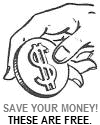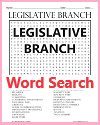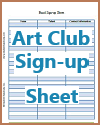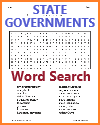European Renaissance Printable Outline |
| www.studenthandouts.com > World History > Renaissance > Renaissance Outlines & PPTs |
 |  |
|---|
| Click here to print. Click here to print an alternate version which leaves space under the subheadings so that students can take notes directly on the handout. |
|
I. Introduction to the Renaissance a. Definition and Overview i. Renaissance as a "Rebirth" of Classical Culture ii. Historical Context: Transition from the Middle Ages to the Early Modern Period b. Geographic Spread i. Italy as the Birthplace of the Renaissance ii. Spread of Renaissance Ideas and Artistic Styles across Europe II. Humanism and Education a. Humanism Defined i. Emphasis on Human Potential and Achievement ii. Revival of Classical Learning (Greek and Roman) b. Humanist Scholars and Their Contributions i. Petrarch: The "Father of Humanism" ii. Erasmus: Humanist and Reformer iii. Pico della Mirandola: Oration on the Dignity of Man c. Education in the Renaissance i. Humanist Curriculum ii. The Role of Printing in Disseminating Knowledge III. Art and Architecture a. Renaissance Art Characteristics i. Realism and Naturalism ii. Use of Perspective iii. Individualism and Portraiture b. Key Renaissance Artists i. Leonardo da Vinci: "Renaissance Man" ii. Michelangelo: Sculptor and Painter iii. Raphael: Master of Frescoes iv. Titian: Venetian Renaissance Painter c. Architectural Innovations i. Filippo Brunelleschi: Florence's Dome ii. Andrea Palladio: Architectural Treatises and Neoclassical Influence IV. Literature and Poetry a. Renaissance Literature i. Revival of Classical Texts ii. Vernacular Literature: Dante, Chaucer, and Cervantes b. The Role of the Printing Press i. Johannes Gutenberg's Printing Revolution ii. Dissemination of Books and Ideas c. Renowned Renaissance Writers i. Dante Alighieri: Divine Comedy ii. Geoffrey Chaucer: The Canterbury Tales iii. Miguel de Cervantes: Don Quixote V. Science and Exploration a. Scientific Renaissance i. Transition from Scholasticism to Empirical Inquiry ii. Copernicus and the Heliocentric Model iii. Galileo Galilei: Observational Astronomy b. Exploration and Expansion i. European Voyages of Discovery ii. Columbus, Vasco da Gama, and Magellan iii. Impact on Global Trade and Exchange VI. Politics and Patronage a. Patronage of the Arts i. Role of Wealthy Families (e.g., Medici) ii. Church and Papal Patronage b. Political Structures i. Italian City-States ii. Nation-States (e.g., France, Spain) c. Machiavelli and The Prince i. Political Realism and Advice to Rulers VII. Legacy and Impact a. End of the Renaissance i. Transition to the Baroque Era ii. Lasting Influence on Art, Culture, and Thought b. Cultural Legacy i. Spread of Renaissance Ideas across Europe ii. Foundations of Modern Western Culture c. Intellectual and Scientific Legacy i. Seeds of the Scientific Revolution ii. Shaping Modern Philosophy and Thought |
| Renaissance Books and Films | Renaissance Outlines and PowerPoints |
| Renaissance Maps and Pictures | Renaissance Worksheets |
| Renaissance Miscellany | Renaissance Study Games |
| www.studenthandouts.com > World History > Renaissance > Renaissance Outlines & PPTs |









